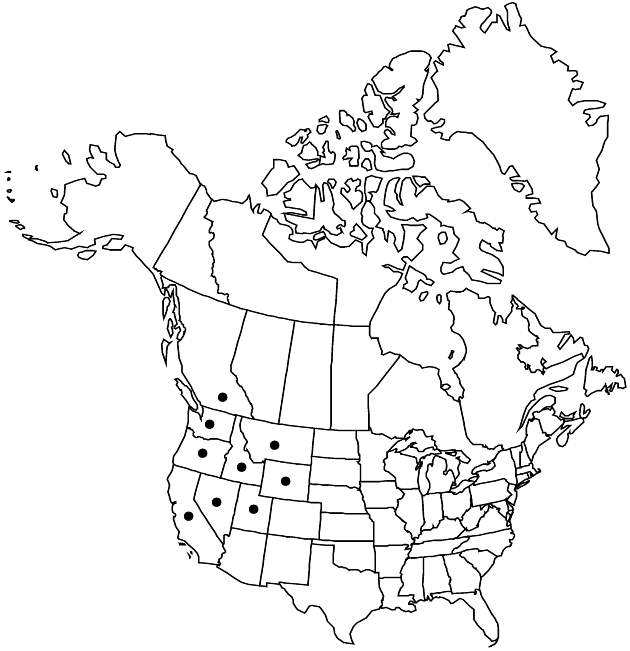Nothocalaïs troximoides
Bull. Calif. Acad. Sci. 2: 55. 1886.
Plants 5–45 cm. Stems (peduncles) sometimes with 1–3, leafy bracts proximally. Leaves: blades linear to linear-lanceolate, 7–30 cm, margins entire, often undulate, often ciliolate, (apices acuminate) faces glabrous or villous. Involucres 14–30 mm. Phyllaries 8–25, green to minutely purple-dotted, often with purple-lined midnerves, lanceolate, (apices acuminate) faces glabrous or villous, especially on margins and midribs. Florets 13–90; ligules 10–25 mm. Cypselae light-brown or gray, 7–13 mm, sometimes narrowed distally, not beaked; pappi of 10–30, aristate scales 10–17 mm. 2n = 18.
Phenology: Flowering Mar–Jun.
Habitat: Vernally moist to dry flats and hillsides, in bunchgrass intermountain grasslands, sagebrush steppe, and open pinyon-juniper and ponderosa pine woodlands, often in stony soils
Elevation: 50–2000 m
Distribution

B.C., Calif., Idaho, Mont., Nev., Oreg., Utah, Wash., Wyo.
Discussion
Nothocalaïs troximoides grows in the northern Great Basin and in Columbia-Snake Rivers Plateau. It shows increased variability in Idaho and parts of Montana, probably as a result of introgression from N. nigrescens. This variability is most evident in the lower Snake River plain and adjacent Oregon, in dryland habitats characteristic of N. troximoides, where populations frequently include individuals with roots, leaves, and cypselae typical of N. troximoides but with unusually large involucres and phyllaries that are broadly lanceolate, acuminate, and densely speckled with purple.
Selected References
None.
Lower Taxa
"fine" is not a number.